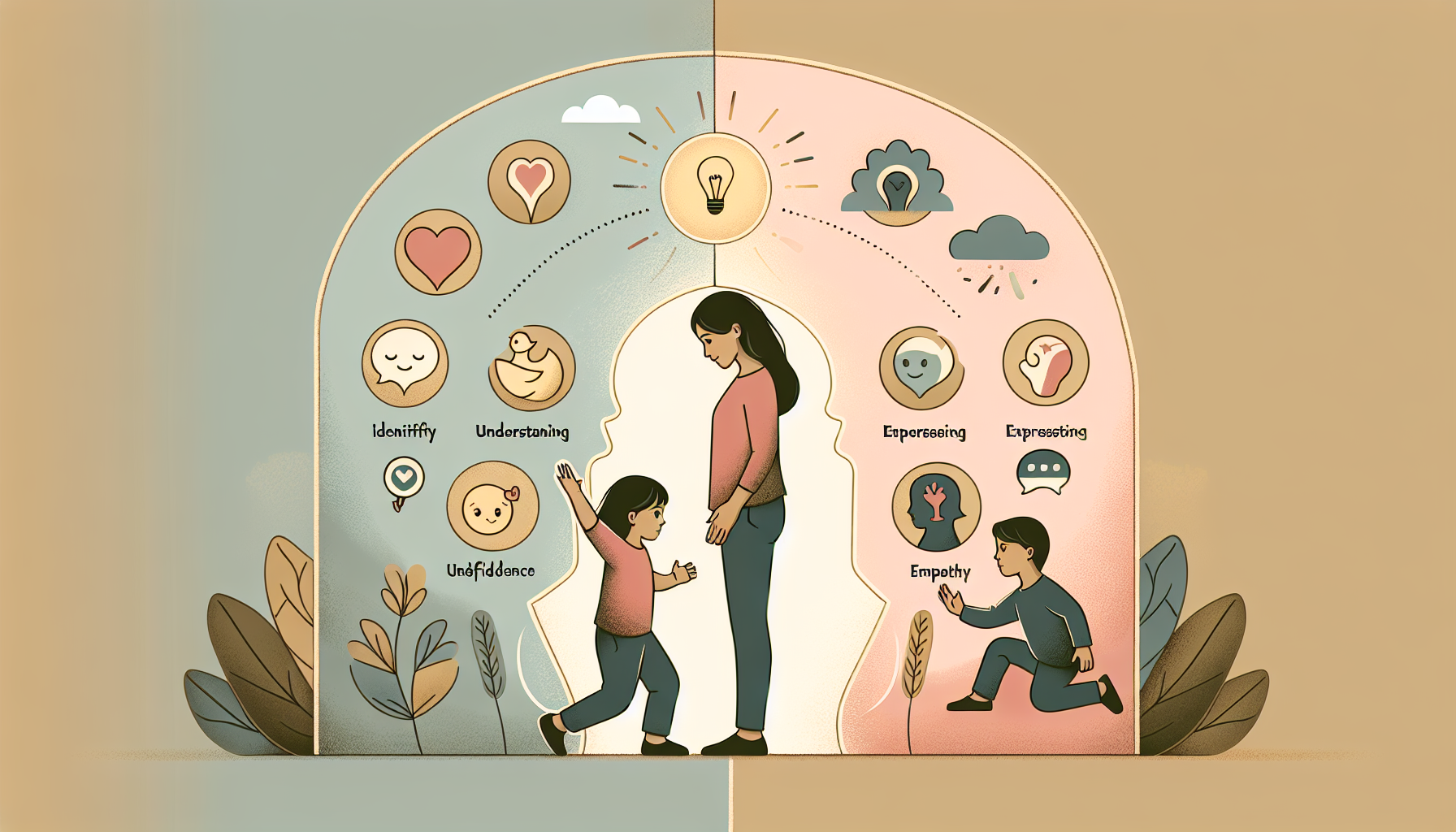“`html
How to Talk to Your Child About Emotions
Introduction
As parents, we strive to raise happy, confident, and emotionally resilient children. But how do we help our kids understand and manage their emotions effectively? Talking about emotions with children is not just a bonding exercise—it’s a crucial step in their emotional development. Research shows that children who learn how to identify and express their feelings are better equipped to handle stress, build relationships, and succeed in life.
In this article, we’ll explore practical and easy ways to discuss emotions with your child. Whether you’re a first-time parent or navigating the teenage years, these parenting tips will empower you to nurture your child’s emotional growth.
Understanding the Importance of Emotional Communication
Emotional communication is the foundation of a child’s mental and social well-being. Children need to feel heard, understood, and safe in expressing their emotions. When parents take the time to talk about feelings, it fosters trust and strengthens the parent-child bond.
Here are some reasons why talking about emotions with children is so important:
- Emotional regulation: Kids learn to manage their feelings, reducing tantrums and emotional outbursts.
- Social skills: Understanding their own emotions helps children empathize with others and build healthier relationships.
- Confidence: When children feel validated, they develop a stronger sense of self-worth.
Main Principles for Talking About Emotions
Successfully navigating conversations with your child about emotions requires patience and empathy. These principles can help you create a supportive environment:
1. Create a Safe Space
Children are more likely to open up when they feel safe and supported. Encourage open communication by being approachable and non-judgmental. Show that it’s okay to feel a wide range of emotions, whether positive or negative.
2. Use Age-Appropriate Language
Tailor your discussions to your child’s age and understanding. For example, younger children may relate to simple terms like “happy,” “sad,” or “angry,” while older kids can explore more complex emotions such as frustration or disappointment.
3. Be a Role Model
Children learn by observing their parents. Demonstrate healthy ways to express and manage your own emotions. For instance, if you’re feeling frustrated, say, “I’m feeling frustrated right now, so I’m going to take a deep breath.”
4. Validate Their Feelings
Validation is key to helping children feel understood. Instead of dismissing their emotions, acknowledge them. For example, say, “I can see you’re upset because your toy broke. That must be really hard for you.”
5. Teach Emotional Vocabulary
Help your child build a “feelings vocabulary” by naming emotions when they arise. Labeling emotions empowers kids to identify and articulate their feelings, reducing frustration and confusion.
Practical Tips for Talking About Emotions
Now that we’ve covered the principles, let’s dive into actionable strategies you can use to foster emotional conversations with your child:
- Start with stories: Use books, movies, or real-life scenarios to discuss emotions. Ask questions like, “How do you think that character felt?” or “What would you do in that situation?”
- Play emotion games: Engage in fun activities like “emotion charades” or matching faces to feelings. These games make learning about emotions interactive and enjoyable.
- Practice active listening: When your child shares their feelings, give them your full attention. Use affirming statements like, “I’m here for you,” or “That sounds really tough.”
- Encourage journaling: For older kids, keeping a journal can be a great way to explore their emotions privately. Offer prompts like, “What made you happy today?”
- Use “I” statements: Model effective communication by using “I feel” statements. For example, say, “I feel proud of you for sharing how you’re feeling.”
Helping Your Child Cope with Big Emotions
Sometimes, children experience intense emotions like anger, fear, or sadness. Here’s how you can help them cope:
1. Teach Calm-Down Techniques
Introduce calming strategies such as deep breathing, counting to ten, or squeezing a stress ball. These tools can help kids regain control when they’re overwhelmed.
2. Offer Comfort
Physical comfort, like a hug, can go a long way in soothing a distressed child. Let them know you’re there to support them, no matter what.
3. Encourage Problem-Solving
Guide your child through problem-solving by asking questions like, “What can we do to make this better?” This approach fosters a sense of autonomy and shows them how to address challenges constructively.
Conclusion
Talking about emotions with your child is one of the most powerful tools you have as a parent. By creating a safe environment, modeling healthy emotional expression, and using practical strategies, you can help your child develop the skills they need for lifelong emotional wellness.
Remember, the journey of emotional development takes time, but every conversation you have brings your child closer to becoming a confident, empathetic, and emotionally intelligent individual. Start small, stay patient, and celebrate every step forward.
For more parenting tips and resources, explore our articles on emotional development and family communication.
“`

